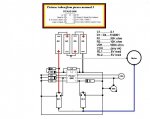I wondered about the non-polarized caps...that really means you can use them either way around?? Cool! I'll start a new topic about the other camera stuff. Wow! 500 yds is pretty far!
Hmmmm...Sunday here too, I forget to describe things well enough....good enough...whichever. The link I posted on the first page is to use on another type camera...not a Sony. Hoping to use it on a "Jazz DV150" and/or cheap board cameras.
To change a Sony P series (P31. P32, P41...etc) , to an IR camera, we remove the original IR blocking filter from between the CCD and lens assembly, and replace it with plain glass. Now the camera sees IR light. You can now cover the flash with IR pass material, and the camera will see the light given off. The pictures will be very red now though, day and night.
OK, the cameras have an auto lens cover, like I said. We normally open it up and disconnect it so the camera doesn't make the noise when opening it. So now the lens cover is just in there open all the time, camera on or off.
I installed an IR cut filter, removed from another camera, into the lens cover on the Sony...P32 in this case I can operate the lens cover...now IR filter...manually, with wires connected to the little motor that moves it. I have not, yet, been able to have it move itself as needed. I want the IR block filter in front of the camera lens during daylight hours so I can have full color pictured during the daytime. All this is something as an aside, I put this one away a few years ago....unfinished. If I can control the gadget in the link, the same thing should work the Sony lens cover/IR cut filter.


